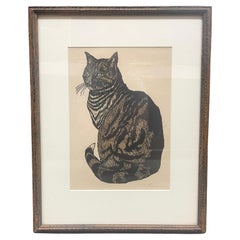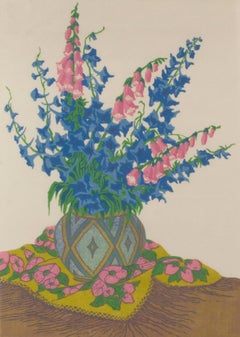Carl Thiemann
Carl Thiemann woodcut in colors, 1917, signed in Pencil.
Located in Seattle, WA
This Piece is in good condition with one minor flaws. Carl Thiemann was a Bohemian Artist and
Category
Vintage 1910s Mid-Century Modern Drawings
Materials
Wood
Rittersporn und Fingerhut (Larkspur and Foxglove)
Located in Fairlawn, OH
very fresh and vibrant
Full sheet as issued
Image size: 19 x 13 3/8 inches
Carl Thiemann
From
Category
1910s Vienna Secession Still-life Prints
Materials
Woodcut
Get Updated with New Arrivals
Save "Carl Thiemann", and we’ll notify you when there are new listings in this category.
More Ways To Browse
Borge Mogensen Bar Cart
Borge Mogensen Trolley
Bouroullec Cloud
Box Mandruzzato
Boy And Dolphin Fountain
Brandy Pan
Brass French Bulldog
Brass Tinder Box
Brass Toilet Paper Holder
Bread Cart
Bread Trolley
Britannia Silver Mug
Broadhurst Clarkson
Bronze Bartolomeo Colleoni
Bronze Bird Bath
Bronze Boy Crab
Bronze Bust Boy Girl
Bronze Bust Of Zeus

